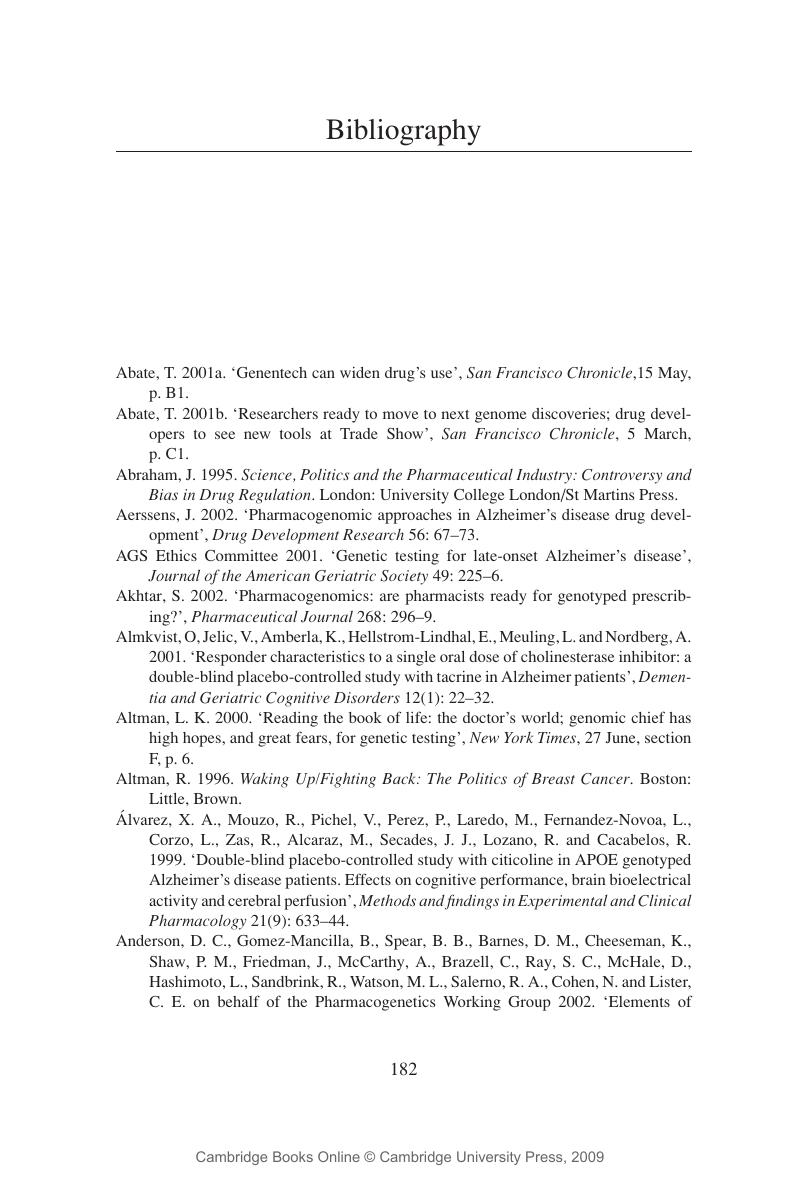Book contents
- Frontmatter
- Contents
- List of figures
- Acknowledgements
- 1 Personalised medicine – a revolution in healthcare
- 2 Pharmacogenetics, expectation and promissory science
- 3 Genetics, moral risk and professional resistance
- 4 Clinical resistance to Alzheimer's pharmacogenetics
- 5 Research, industry and pharmacogenetic literacy
- 6 Engineering the clinic – getting personalised medicine into practice
- 7 The fourth hurdle – cost-effectiveness and the funding of pharmacogenetics
- 8 Disappointment and disclosure in the pharmacogenetic clinic
- 9 The personalised is political
- Bibliography
- Index
- References
Bibliography
Published online by Cambridge University Press: 22 September 2009
- Frontmatter
- Contents
- List of figures
- Acknowledgements
- 1 Personalised medicine – a revolution in healthcare
- 2 Pharmacogenetics, expectation and promissory science
- 3 Genetics, moral risk and professional resistance
- 4 Clinical resistance to Alzheimer's pharmacogenetics
- 5 Research, industry and pharmacogenetic literacy
- 6 Engineering the clinic – getting personalised medicine into practice
- 7 The fourth hurdle – cost-effectiveness and the funding of pharmacogenetics
- 8 Disappointment and disclosure in the pharmacogenetic clinic
- 9 The personalised is political
- Bibliography
- Index
- References
Summary

- Type
- Chapter
- Information
- The Politics of Personalised MedicinePharmacogenetics in the Clinic, pp. 182 - 204Publisher: Cambridge University PressPrint publication year: 2004



